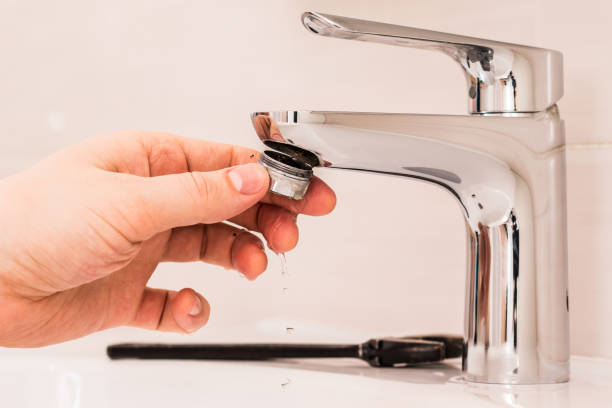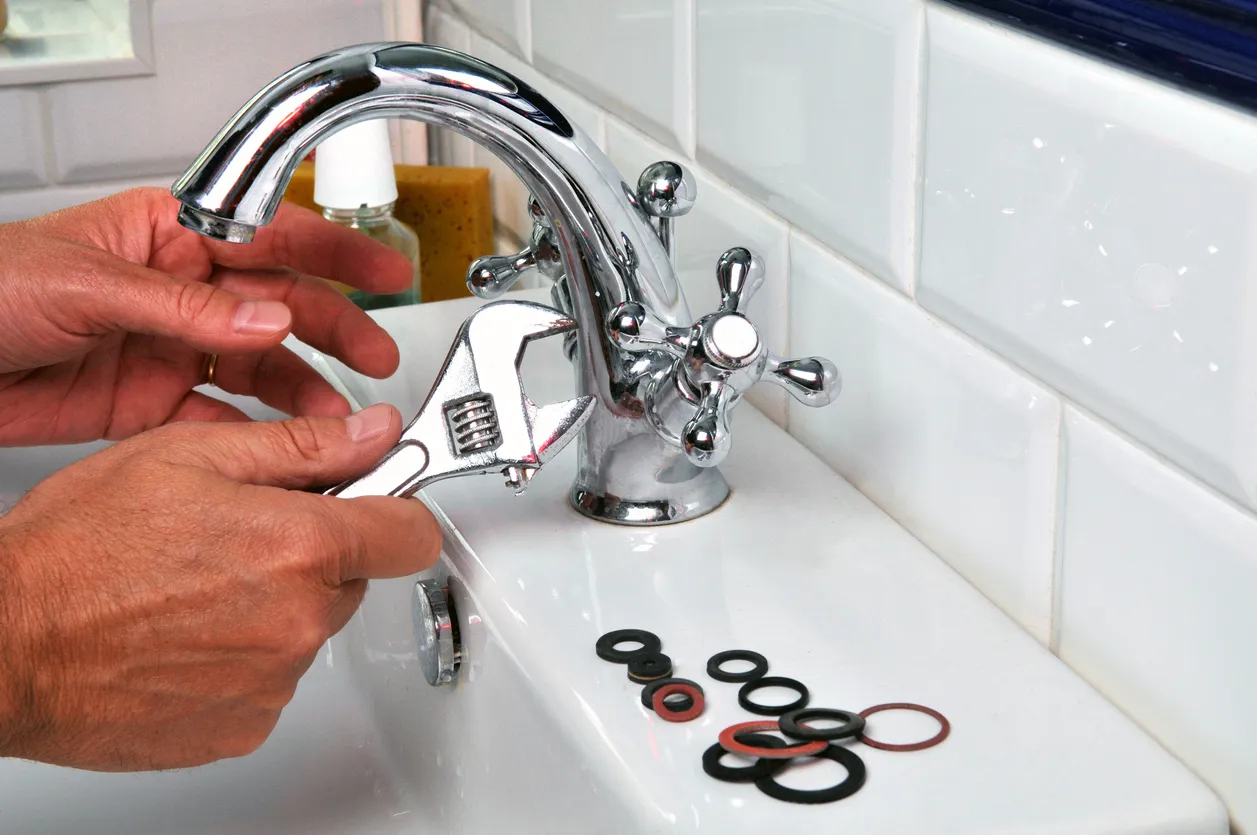Exploring the Value of Dealing with a Malfunctioning Faucet
Exploring the Value of Dealing with a Malfunctioning Faucet
Blog Article
They are making a few good pointers about What Causes Leaky Faucets & How To Fix Them overall in this post below.

Dripping taps might look like a minor trouble, however their influence exceeds simply the aggravation of the noise. From wasting water to incurring unnecessary economic prices and health and wellness threats, disregarding a trickling faucet can lead to numerous repercussions. In this article, we'll look into why it's important to address this usual household issue promptly and effectively.
Waste of Water
Ecological Effect
Dripping faucets add significantly to water wastefulness. According to the Environmental Protection Agency (EPA), a solitary faucet trickling at one drip per second can throw away greater than 3,000 gallons of water per year. This not only pressures water resources yet likewise affects environments and wild animals depending on them.
Step-by-Step Guide to Repairing a Dripping Tap
Tools Called for
Before trying to repair a trickling faucet, collect the needed tools, consisting of a flexible wrench, screwdrivers, replacement components (such as washers or cartridges), and plumber's tape.
Typical Tap Issues and Their Solutions
Determine the sort of tap and the details concern causing the drip. Typical troubles consist of worn-out washing machines, rusty shutoff seats, or defective O-rings. Refer to manufacturer guidelines or online tutorials for detailed advice on fixings.
Financial Expenses
Increased Water Costs
Beyond the ecological impact, trickling taps can inflate water expenses considerably. The gathered wastefulness with time equates into higher utility expenditures, which might have been avoided with prompt repair services.
Prospective Property Damages
In addition, prolonged trickling can bring about damage to fixtures and surfaces bordering the faucet. Water accumulation can trigger staining, rust, and also architectural problems if left neglected, causing added repair service costs.
Health Concerns
Mold And Mildew and Mold Development
The continuous existence of moisture from a trickling tap produces a suitable environment for mold and mildew and mildew growth. These fungi not just compromise interior air top quality however likewise pose health and wellness threats, particularly for people with respiratory system conditions or allergic reactions.
Waterborne Conditions
Stagnant water in dripping faucets can become a breeding place for microorganisms and various other pathogens, enhancing the risk of waterborne conditions. Impurities such as Legionella bacteria flourish in stagnant water, potentially leading to serious illnesses when ingested or breathed in.
Do it yourself vs. Professional Fixing
Benefits and drawbacks of DIY Repair Work
While some may attempt to fix a leaking faucet themselves, DIY repairs feature their own set of obstacles. Without correct knowledge and tools, DIY attempts can worsen the issue or cause insufficient repairs, prolonging the problem.
Advantages of Working With an Expert Plumber
Working with a professional plumber ensures that the underlying root cause of the dripping faucet is resolved efficiently. Plumbing professionals possess the expertise and tools to diagnose and repair tap concerns successfully, conserving time and reducing the danger of more damages.
Ecological Responsibility
Individual Contribution to Preservation
Taking obligation for taking care of leaking faucets lines up with wider initiatives toward water preservation and environmental sustainability. Every person's activities jointly make a substantial impact on preserving valuable resources.
Lasting Living Practices
By focusing on punctual fixings and taking on water-saving habits, individuals contribute to lasting living methods that profit both present and future generations.
Preventive Measures
Regular Maintenance Tips
To avoid leaking faucets, perform regular upkeep such as cleansing aerators, checking for leaks, and replacing damaged parts immediately. Additionally, take into consideration installing water-saving gadgets or upgrading to a lot more efficient components.
Relevance of Prompt Repair Works
Attending to leaking faucets as soon as they're seen stops additional water wastage and prospective damage, inevitably saving both water and cash over time.
Impact on Home Value
Assumption of Well-Maintained Residential Or Commercial Property
Maintaining a building in good condition, consisting of resolving upkeep issues like trickling taps, enhances its perceived worth and charm amongst potential customers or renters.
Impact on Resale Value
Properties with properly maintained plumbing fixtures, consisting of taps, command higher resale worths in the property market. Dealing with trickling taps can contribute to a positive impact during residential property evaluations and settlements.
Verdict
Addressing a dripping faucet exceeds simple comfort; it's a crucial step toward conserving water, lowering financial expenses, and safeguarding wellness and home. Whether with do it yourself repair work or expert aid, doing something about it to fix dripping taps is a tiny yet impactful means to promote accountable stewardship of resources and contribute to a much healthier, extra lasting future.
Most Common Reasons for a Leaky Faucet and How to Stop the Drip
Whether it’s your kitchen faucet leaking or a bathroom faucet leaking, one leaky faucet can waste anywhere from three to 30 gallons of water every single day. If the constant drip-drip-drip doesn’t get your attention, your water bill will. The good news is that, by following a few simple steps, chances are pretty good you can fix the problem yourself.
Why is it dripping?
Before you start taking things apart, let’s break down some of the most common causes of a leaky faucet.
Bad O-ring.
A cartridge is a valve that controls the flow of water into the faucet spout. On cartridge faucets there’s an O-ring—the little disc attached to the stem screw that holds the faucet handle in place. If it’s loose or worn-out, it can cause your sink handle to leak. Of course, the cartridge itself could be worn out. If that’s the case, make sure you replace it with the exact same kind.
Corroded valve seat.
The valve seat connects the faucet and the spout. If the leak seems to be coming from the spout, it might be because a buildup of water sediment has corroded the valve seat.
Worn-out washers or seals.
A leaky spout could be caused by a bad washer that rests against the valve seat. It’s just a matter of time before friction takes its toll. It could also be the wrong size washer or one that’s been installed incorrectly. Water sediments can also corrode inlet and outlet seals.
Water pressure.
If the faucet only drips now and then, or when you turn the handles a certain way, you should probably check your home’s water pressure.
Loose or broken parts.
The adjusting ring and packing nuts in the stream screw can become loose over time, causing your sink handle to leak. Try tightening or replacing the packing nut. If the leak is coming from the pipes underneath the sink, you probably have a broken pipe or fitting. If that’s the case, you should definitely call a plumber.
Know your faucet.
Faucets come in a variety of types. Each one has its own assembly—and its own possible causes of leaks. Learning about the four most common kinds of faucets will help you know how to take them apart and make any repairs.
How to stop a leaky faucet
Fixing that leaky faucet doesn’t have to take a lot of time, money, or expertise. It’s usually a simple matter of replacing a worn-out washer or gasket, a loose O ring, or another part. Chances are really good you can do this yourself if you follow these simple steps.
Shut off the water.
Before you tackle the faucet, cut off the water supply to the sink. There should be one valve for hot and one for cold. Hand-turn them clockwise with your hands till they close. If there are no valves under the sink, head to the basement and shut off the main water supply to the house. Then turn on the faucet until it empties out the water that’s still in the line and you’re ready to start. It’s a good idea to cover the sink drain with a plug or a rag so you don’t lose any small pieces and parts while you’re working.

I was made aware of that editorial on Leaky Faucets: Why They Happen & What to Do About Them from a friend on another domain. For those who enjoyed our post if you please make sure you remember to pass it around. I cherish reading our article about .
Report this page